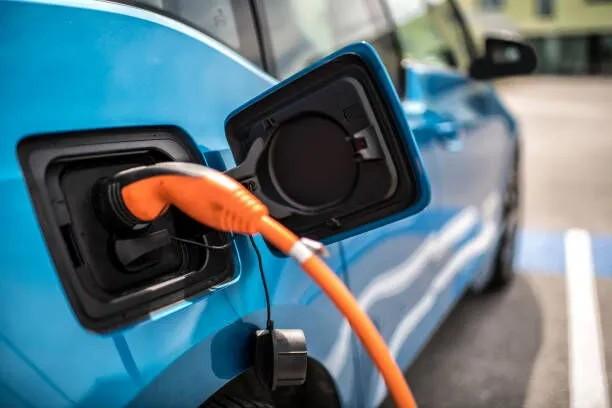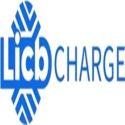Notifications

8 minutes, 31 seconds
-20 Views 0 Comments 0 Likes 0 Reviews

As a leading EV charger manufacturer in China, LiCB Charge offers reliable AC and DC electric vehicle charging stations along with comprehensive charging solutions.The electric vehicle (EV) revolution is fundamentally transforming the transportation landscape, driven by increasing adoption across the globe. One of the key enablers of this transition is the development of standardized EV charging infrastructure, ensuring that vehicles and charging stations are interoperable. Among the most widely recognized standards for EV charging connectors are SAE J1772 and IEC 62196. These standards address different regional needs and technical requirements, playing pivotal roles in the global EV ecosystem.
The SAE J1772 connector, commonly known as the J plug or Type 1 connector, is the foundational charging standard in North America. Developed by the Society of Automotive Engineers (SAE), this standard ensures a safe, efficient, and reliable interface for EV charging, particularly for Level 1 and Level 2 charging applications.
Universal Compatibility in North America
SAE J1772 connectors are the most common charging plug type used in North America. While Tesla uses its proprietary charging port, all Tesla vehicles are equipped with a J1772 adapter for compatibility with most public charging stations in the region.
Tesla Integration
Tesla vehicles use a proprietary connector but are supplied with an adapter to connect to J1772 charging stations, thus enabling seamless charging with most EV infrastructure in North America.
Single-Phase AC Charging
The J1772 connector is designed primarily for single-phase AC charging, making it optimal for both home charging setups and public Level 1 and Level 2 stations.
Safety and Reliability
SAE J1772 is designed with robust safety features to prevent overcurrent and ensure secure connections during the charging process, contributing to the reliability of the infrastructure.
The simplicity of SAE J1772 has contributed significantly to EV adoption in North America by providing a standardized and reliable charging solution.
The IEC 62196 standard, developed by the International Electrotechnical Commission (IEC), addresses the need for a global framework for EV charging connectors and systems. It was designed to mitigate the fragmentation caused by various proprietary connectors and ensure universal compatibility for EVs and charging stations worldwide.
Global Standardization
Unlike SAE J1772, which is primarily used in North America, IEC 62196 serves as a global standard, promoting interoperability between EVs and chargers across multiple continents.
Diverse Connector Types
IEC 62196 includes several connector designs to meet the diverse technical and regional needs of the global market:
Type 1: This is the same as SAE J1772 and is used in regions like Japan.
Type 2: Widely adopted in Europe, supporting three-phase AC charging.
CCS (Combined Charging System): A hybrid connector that integrates both AC and DC charging capabilities, enabling faster and more versatile charging.
Support for Advanced Charging Modes
IEC 62196 outlines four charging modes:
Mode 1: Slow charging via a standard household outlet.
Mode 2: Semi-fast charging with additional safety features.
Mode 3: Fast AC charging through dedicated EVSE (Electric Vehicle Supply Equipment).
Mode 4: DC fast charging for high-speed, long-distance travel.
Higher Power Capabilities
Type 2 connectors support three-phase AC charging, while CCS connectors enable DC fast charging, capable of handling power levels well beyond the capabilities of SAE J1772, making IEC 62196 suitable for both home and high-power public charging stations.
The widespread adoption of IEC 62196 in regions such as Europe and parts of Asia has made it the global standard for EV charging infrastructure.
While both standards aim to ensure compatibility and promote EV adoption, several key differences set them apart:
Regional Adoption
SAE J1772: Predominantly used in North America, forming the backbone of EV charging infrastructure in this region.
IEC 62196: Widely adopted globally, particularly in Europe, Asia, and other regions where advanced charging capabilities are in demand.
Connector Types and Design
SAE J1772: Primarily designed for single-phase AC charging, making it suitable for residential and lower-power applications.
IEC 62196: Offers a broader range of connectors, including Type 1, Type 2, and CCS, supporting both AC and DC charging with higher power capacities.
Charging Speed and Power
SAE J1772: Limited to single-phase AC charging with a maximum output of 19.2 kW.
IEC 62196: Supports more powerful options, including three-phase AC charging and DC fast charging up to several hundred kW, catering to both residential and high-power public stations.
Installation and Infrastructure Requirements
SAE J1772: Easier and more cost-effective installation, ideal for home and residential Level 1 and Level 2 charging stations.
IEC 62196: Requires more complex installation, particularly for Type 2 and CCS systems, which demand robust electrical infrastructure.
Maintenance Considerations
SAE J1772: Requires minimal maintenance, thanks to its straightforward design and lower power capabilities.
IEC 62196: Requires more frequent maintenance, especially for high-power connectors and the multi-pin design of CCS systems.
SAE J1772 in North America
The SAE J1772 connector dominates the North American EV charging market. Most EVs from automakers like GM, Ford, and Nissan feature J1772-compatible inlets, ensuring widespread compatibility across the region.
IEC 62196 Globally
In Europe and other regions, the IEC 62196 standard is the norm. Type 2 connectors are found in nearly every public charging station, while CCS is gaining ground due to its support for fast DC charging, ideal for long-distance travel.
Tesla stands out as a key player in bridging the gap between SAE J1772 and IEC 62196. In North America, Tesla vehicles use a proprietary connector but come with an adapter for J1772 stations. In regions like Europe, Tesla vehicles use connectors that comply with the IEC 62196 standard, aligning with the global trend.
As EV adoption accelerates, we may see convergence between regional standards like SAE J1772 and IEC 62196 to facilitate cross-border travel and ensure a unified global charging infrastructure. Emerging technologies such as wireless charging and bidirectional energy transfer (vehicle-to-grid) could further shape the evolution of these standards.
Both SAE J1772 and IEC 62196 are essential to the continued growth and success of the EV industry. SAE J1772 remains crucial in North America, providing a simple and reliable charging solution, while IEC 62196 facilitates global interoperability and advanced capabilities. Understanding these standards is vital for stakeholders working toward a sustainable and unified future for electric mobility.Know more about Google SEO Directory
China EV Chargers EV Charger Manufacturer Smart EV Chargers Electric Car Chargers Electric Vehicle Chargers Electric Car Charging Stations

